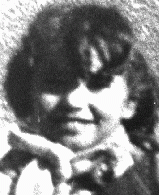
Monique Jackson
Born: October 29, 1937
Paris, France
Monique's Jewish parents met in Paris. Her father had emigrated there from Russia to study engineering, and her mother had come from Poland as a young child. Monique's father did not have enough money to finish university, so he went to work as an upholsterer. He also shared a small business which sold his hand-tooled leather purses.
1933-39: Monique's mother was 20 when she gave birth to Monique in 1937. Two years later, Parisians were threatened by the possibility of bombing by the Germans, and French authorities suggested that all mothers with young children leave the city. With the help of the authorities, Monique and her mother fled to the town of St. Laurent de Neste in the Pyrenees. Monique's father soon joined them.
1940-44: When she was 5, Monique was hidden with other children at the home of a family in the Pyrenees. The family would punish the children by not giving them food. Monique was sometimes so hungry that she would dig outside for roots in the ground to eat. Monique knew she was being hidden with the family because conditions were dangerous, but she missed her parents very much. One day, sensing that Monique was not well, her mother came and took her.
Monique and her family survived the war with the help of many people in St. Laurent de Neste. In 1950 the Jacksons immigrated to the United States.